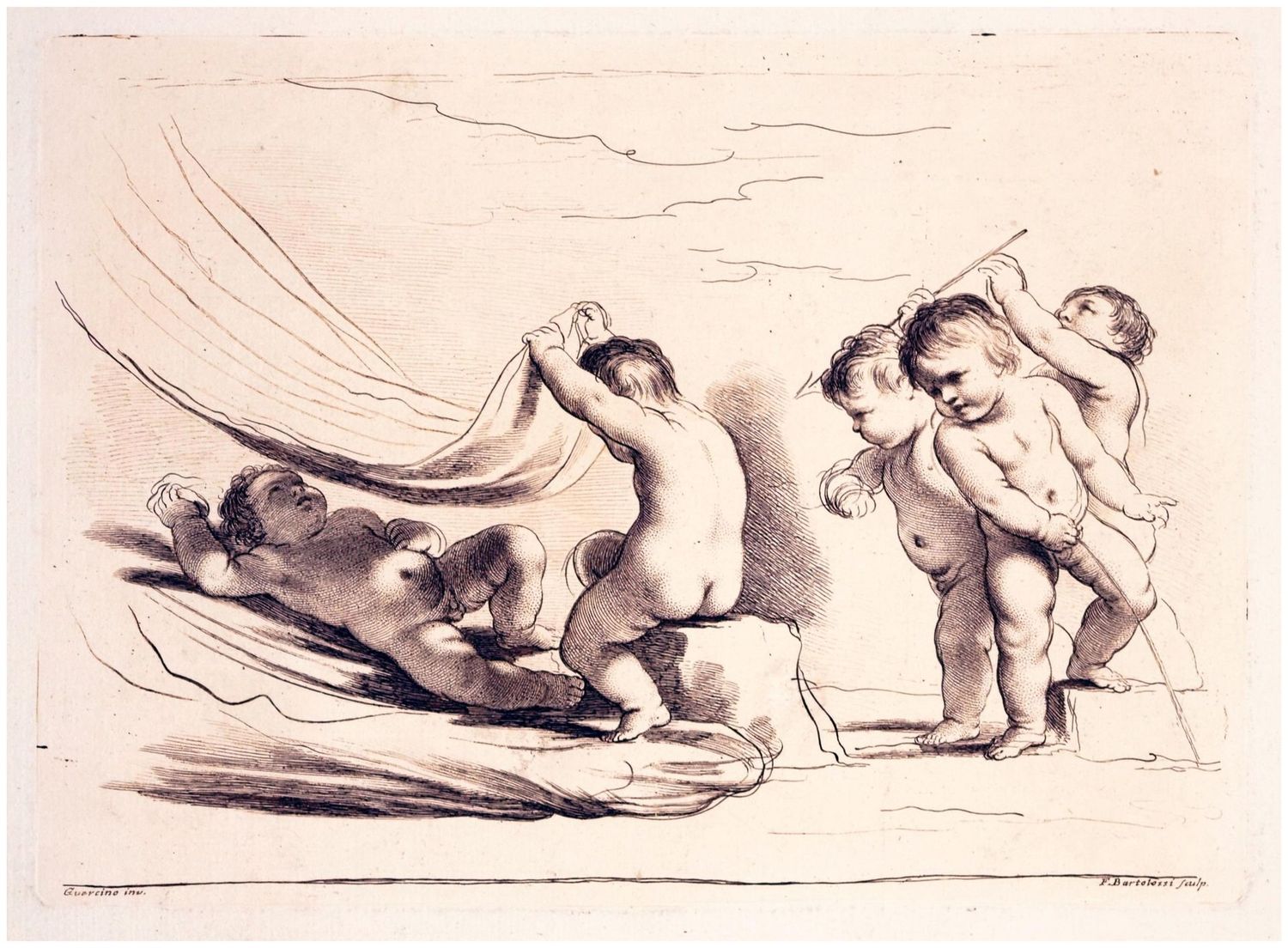Francesco Bartolozzi (1728-1815), Putti in an allegorical love game, c. 1764
Francesco Bartolozzi(1728 Florence - 1815 Lisbon), Putti in an allegorical love game , around 1764. Crayon engraving on laid paper after a drawing by Guercino, 21 cm x 29 cm (plate size), 38 cm x 56.5 cm (sheet size), marked lower left “Guercino inv.” as an engraving after Guercino and signed lower right “F. Bartolozzi sculp”.
- the wide margin with corner losses, smaller tears, slightly foxed and somewhat dusty, the strong and precise depiction in good condition
- The Ambivalence of Eros -
This sheet showcases the artist's renowned skill, which resulted in his invitation to London and his appointment as "Engraver to the King." Bartolozzi combines a free-flowing, linear design with partial dotting to give the print an unprecedented graphic-painterly effect. This effect corresponds to the emerging appreciation of drawing as a direct form of artistic expression.
On the left, a putto lifts a drapery to reveal a reclining putto, whose body emerges from the shadows. This scene could have been depicted by Titian or Rubens, except here, it is the putti performing this love play imitatively. On the opposite side is a group of three putti that could also have been taken from a painting by Titian or Rubens. One aims a love arrow at the main scene while another strikes water. This creates an ironic interplay between imitation and the depiction of love play, whose ambivalence contributes to the eros of the painting.
About the artist
The son of goldsmith Gaetano Bartolozzi, young Francesco received his first artistic training from his father. He then attended the Academy of Fine Arts in Florence, studied antiquities in Rome, and joined Joseph Wagner's studio in Venice in 1745. Bartolozzi produced numerous engravings based on drawings by Venetian artists for Wagner's art publishing house. These engravings were popular due to their high quality. After engraving drawings by Guercino for George III's librarian, Richard Dalton, Dalton invited Bartolozzi to London in 1764. Bartolozzi lived there for the rest of his life. Bartolozzi was admitted to the Society of Artists, appointed engraver to the king, and elected to the newly founded Royal Academy of Art in 1769. While in London, Bartolozzi acquired the newly discovered crayon technique, which made it possible to translate chalk and charcoal drawings into prints by dotting. This technique became known in England as the "red chalk manner." Bartolozzi further developed this technique by using stippling to create surface effects instead of line-oriented designs, known as "stippled work." He was able to translate painterly and graphic effects into prints with great virtuosity, making Bartolozzi the most popular and sought-after reproduction engraver of his time. Angelika Kauffmann, for example, who also worked in London, had her works engraved by Bartolozzi. In 1802, at the age of 75, Bartolozzi accepted a position as director of the Academy of Fine Arts in Lisbon, where he worked until his death.

